Exception Has Been Thrown By The Target Of An Invocation
Overview:
When working with code, encountering exceptions is a common occurrence. One such exception that programmers often come across is the “Exception has been thrown by the target of an invocation.” This exception occurs when a method or property is invoked through reflection, and an exception is thrown within the target method or property.
Understanding the cause of the exception:
The “Exception has been thrown by the target of an invocation” typically arises when a method or property is invoked using reflection, and an exception is encountered within that method or property. This exception is thrown by the .NET framework’s reflection mechanism, which enables the program to dynamically invoke methods or properties at runtime. When an exception occurs within the target of the invocation, the reflection mechanism wraps it within a TargetInvocationException and throws it to the calling code.
Common scenarios in which the exception occurs:
Several scenarios can lead to the occurrence of this exception. One common scenario is when using reflection to invoke a method or property that requires certain preconditions to be met. If these preconditions are not satisfied, an exception can be thrown within the target of the invocation. Another scenario is when invoking third-party libraries or frameworks that may throw exceptions. In such cases, the reflection mechanism encapsulates the thrown exception within the TargetInvocationException and reports it to the calling code.
Analyzing the error message and stack trace:
When encountering the “Exception has been thrown by the target of an invocation,” it is crucial to analyze the associated error message and stack trace. The error message usually provides information about the specific exception that occurred within the target of the invocation. The stack trace helps in identifying the sequence of method calls leading to the exception, allowing developers to pinpoint the source of the issue.
Steps to diagnose and troubleshoot the exception:
To diagnose and troubleshoot the “Exception has been thrown by the target of an invocation,” consider the following steps:
1. Inspect error details: Carefully examine the error message and stack trace to understand the specific exception and its root cause.
2. Review code implementation: Check the implementation of the method or property being invoked through reflection. Look for any potential issues that may lead to an exception.
3. Verify preconditions: If the target method or property has preconditions, ensure that they are met before invoking it. Check for any missing dependencies, invalid inputs, or improper configurations.
4. Debugging: Use a debugger to step through the code and identify the exact line where the exception occurs. This can provide valuable insights into the issue.
5. Logging and tracing: Implement logging and tracing mechanisms within the target method or property to capture relevant information about the exception. This can aid in diagnosing the problem.
6. Test with different scenarios: Replicate the scenario that triggered the exception and test with different inputs or conditions. This can help in understanding the problem space and finding potential workarounds.
Handling the exception gracefully in code:
When encountering the “Exception has been thrown by the target of an invocation,” proper exception handling is crucial. In the catch block that handles the TargetInvocationException, developers should access the InnerException property to retrieve the original exception thrown within the target method or property. By handling this exception appropriately, developers can provide meaningful error messages to users, log exceptions for troubleshooting purposes, and prevent application crashes.
Best practices for preventing the exception:
To prevent the “Exception has been thrown by the target of an invocation” exception, consider the following best practices:
1. Ensure proper error handling: Implement exception handling mechanisms within the target method or property to handle any potential exceptions gracefully.
2. Validate inputs: Validate inputs before invoking methods or properties through reflection. This helps prevent exceptions caused by invalid or unexpected data.
3. Test thoroughly: Conduct comprehensive testing on the codebase to identify and fix potential issues. Pay special attention to scenarios involving reflection and dynamic invocation.
4. Follow coding standards and best practices: Adhere to industry-standard coding practices to minimize the likelihood of exceptions. This includes proper exception handling, defensive programming, and modular code design.
Potential challenges and limitations when resolving the exception:
Resolving the “Exception has been thrown by the target of an invocation” exception can pose some challenges. Since this exception is thrown within the target method or property, diagnosing the root cause might require careful inspection of the code implementation and dependencies. Additionally, if the target of the invocation is part of a third-party library, resolving the exception may require seeking support from the library’s developers or community.
Resources for further learning and support:
Here are some resources that can provide further learning and support on the topic:
1. Microsoft Documentation: The official documentation from Microsoft provides detailed information on exceptions and their handling. It covers various exceptions, including the “Exception has been thrown by the target of an invocation” exception.
2. Developer forums and communities: Participate in developer forums or communities to seek guidance from experienced developers who have encountered similar issues.
3. Online tutorials and blogs: Explore online tutorials and blogs that provide step-by-step guidance on resolving common exceptions, including the “Exception has been thrown by the target of an invocation.”
4. Books on software development: Consult books on software development that cover topics related to exception handling and troubleshooting. These resources can provide in-depth knowledge and practical insights.
In conclusion, encountering the “Exception has been thrown by the target of an invocation” exception poses challenges to developers working with reflection. By understanding the cause, analyzing error messages and stack traces, diagnosing, troubleshooting, and handling the exception gracefully, developers can effectively resolve this issue and enhance the stability and reliability of their code. Remember to follow best practices, prevent the exception proactively, and leverage available resources for further learning and support.
Fix: Exception Has Been Thrown By The Target Of An Invocation
What Does Exception Has Been Thrown By The Target Of An Invocation Mean?
Exception handling is a crucial aspect of software development, allowing developers to anticipate and handle errors or unexpected situations that may occur during program execution. However, encountering an error can sometimes be challenging, especially when faced with cryptic error messages. One such error message that developers may come across is “Exception has been thrown by the target of an invocation.” In this article, we will delve into the meaning behind this error message and explore various scenarios in which it may occur.
Understanding Reflection
Before delving into the error message in question, it is essential to understand the concept of reflection. Reflection is a powerful feature of many programming languages, including Java and C#, that allows programs to examine and modify their structure and behavior at runtime. This feature enables developers to write flexible and dynamic code that adapts to changing requirements.
When using reflection, developers can access information about classes, methods, and properties dynamically, without knowing their exact details at compile-time. This capability opens up a wide range of possibilities, such as dynamically loading assemblies, invoking methods, and creating instances of classes without explicitly specifying their types. Reflection serves as a fundamental building block for various advanced programming techniques and frameworks.
Target of an Invocation
In the context of reflection, “target of an invocation” refers to the specific entity, such as a method or constructor, that an operation aims to invoke or call dynamically. When using reflection to perform invocations, developers can encounter scenarios where an error occurs during the invocation, leading to the “Exception has been thrown by the target of an invocation” message.
The error message usually indicates that an exception, a special object representing an error, has occurred within the code being invoked through reflection. This exception, which is typically derived from the base Exception class, provides valuable information about the nature of the error and assists developers in identifying and resolving the issue.
Possible Causes of the Error
There are several factors that can contribute to this error message appearing in your code. Let’s explore some common scenarios that can lead to an exception being thrown by the target of an invocation:
1. Incorrect Method Signature: One possible cause stems from a mismatch between the arguments provided for the method invocation and the expected signature of the method being called. Ensure that you are passing the correct number of arguments with the appropriate types when invoking a method through reflection.
2. Insufficient Access Rights: Reflection allows developers to access non-public methods, properties, and fields. However, if the target of an invocation is a non-public member, make sure that the code attempting to access it has the necessary access rights, such as being defined in the same assembly or having proper class inheritance.
3. Runtime Exceptions: Within invoked methods, runtime exceptions like null reference exceptions or invalid cast exceptions might occur. These exceptions propagate up the call stack and are then wrapped by the reflection infrastructure, leading to the “Exception has been thrown by the target of an invocation” message. Diving into the inner exception can provide valuable clues about the root cause of the issue.
4. Unhandled Exceptions: If the invoked code does not handle an exception that occurs during its execution, the exception will be propagated to the caller. When using reflection, it is essential to catch and handle exceptions appropriately within the invoked code to avoid this error message.
Frequently Asked Questions (FAQs)
Q: Can I resolve this error by handling the exception on the calling side?
A: While handling the exception on the calling side is possible, it is not advisable. Ideally, you should catch and handle exceptions within the invoked code itself to ensure proper encapsulation and separation of concerns.
Q: How can I extract additional information about the exception that was thrown by the target of an invocation?
A: You can access the inner exception, which contains detailed information about the error, by examining the InnerException property of the exception object.
Q: Does this error only occur in languages that support reflection, such as Java and C#?
A: Yes, this error is specific to languages that support reflection. If you’re not using reflection, you won’t encounter this error message.
Q: Are there any tools or techniques that can help in debugging this error?
A: Yes, you can use debugging tools provided by your programming environment to step through the code and analyze the state of variables at each step. This process can help pinpoint the cause of the exception.
In conclusion, the “Exception has been thrown by the target of an invocation” error message occurs when an exception is thrown within the code being invoked through reflection. Understanding the concept of reflection and considering possible causes, such as incorrect method signatures or insufficient access rights, can aid in troubleshooting and resolving this error. By handling exceptions appropriately within the invoked code, you can ensure robust and error-free execution in your software applications.
What Is My Exception Message Exception Has Been Thrown By The Target Of An Invocation?
In the world of software development, exceptions play a crucial role in handling errors and unexpected situations that may occur during the execution of a program. When an exception is thrown, it interrupts the normal flow of the program and transfers control to a specific exception handler. One common exception that developers often encounter is the “my exception message exception has been thrown by the target of an invocation” error message.
This exception message typically arises in the context of .NET programming languages like C# or Visual Basic. It occurs when a method or property in a .NET class is invoked using reflection, but the invocation fails due to an underlying exception. In simpler terms, it means that an error occurred while trying to call a method or access a property of an object using reflection.
To better understand this exception, let’s delve into the concept of reflection in .NET. Reflection is a powerful feature that allows programs to examine and manipulate their own structure and behavior at runtime. It enables developers to dynamically create instances of classes, invoke their methods, and access their properties, even if they are not known at compile-time.
When using reflection, the “my exception message exception has been thrown by the target of an invocation” error message can be thrown for a variety of reasons. Some common causes include:
1. Access restrictions: If the invoked method or property is not accessible due to access modifiers like private or protected, the target of the invocation will throw an exception.
2. Incorrect method signature: If the arguments passed to the method during the invocation do not match the expected parameters, an exception may be thrown.
3. Missing or incorrect object instance: If the target object instance is not created or provided properly, the invocation may fail and trigger an exception.
4. Exceptions within the invoked method: If the method being invoked itself throws an exception, it could trigger the “my exception message exception has been thrown by the target of an invocation” message.
5. Incompatibility with the target object: If the invoked method or property does not exist on the target object, or the arguments passed are incompatible with the object, an exception can occur.
6. Bugs and coding errors: Programmers may inadvertently introduce errors in their code, leading to a failed invocation and resulting in the exception message.
To diagnose and resolve the “my exception message exception has been thrown by the target of an invocation” issue, it is imperative to investigate the stack trace generated by the exception. The stack trace provides a detailed report of the method calls that led to the exception, helping developers pinpoint the root cause of the problem.
To handle this exception effectively, consider the following steps:
1. Review the exception message: Examine the exception message to get clues about the exact cause of the failure. It may provide details such as the method name, arguments, or any other relevant information.
2. Analyze the stack trace: Look for the method calls leading to the exception and identify any discrepancies in the code logic.
3. Check accessibility and permissions: Ensure that the invoked method or property is appropriately accessible and the necessary permissions are granted.
4. Verify object instantiation: Check if the target object is correctly created and properly initialized before the invocation.
5. Validate method signatures and arguments: Double-check that the method signatures match the expected parameters and verify the arguments being passed during the invocation.
6. Debug and test: Make use of debugging tools to step through the code and identify any logical flaws or inconsistencies. Write test cases to reproduce the issue and ensure that the fix does not introduce new problems.
Frequently Asked Questions (FAQs):
Q1. Can’t I simply catch the “my exception message exception has been thrown by the target of an invocation” exception and continue execution?
A1. Catching the exception alone may not resolve the underlying issue causing the exception. It’s crucial to understand the root cause and address it appropriately. Ignoring the exception can lead to unexpected behavior or other failures down the line.
Q2. How can I prevent this exception from occurring in the first place?
A2. Thoroughly test and validate your code, ensuring that all necessary conditions are met before invoking methods or accessing properties dynamically. Follow best practices, and handle exceptions in a way that allows for graceful recovery or appropriate error handling.
Q3. Does this exception only occur in .NET languages like C# or Visual Basic?
A3. The specific error message, “my exception message exception has been thrown by the target of an invocation,” is typically seen in .NET languages due to their extensive use of reflection. However, similar exceptions can occur in other programming languages that support dynamic invocation or reflection-like features.
Q4. Can this exception be caused by external factors, such as a problem with the environment or external dependencies?
A4. While it’s possible for external factors to indirectly contribute to this exception, it primarily arises due to errors within the code. It is crucial to thoroughly test the code and ensure compatibility with external dependencies.
In conclusion, the “my exception message exception has been thrown by the target of an invocation” error message is a common exception encountered when using reflection in .NET programming languages. Understanding the causes and resolving this exception requires careful analysis of the code, stack trace, and ensuring proper accessibility and object instantiation. Resolving this issue effectively will lead to a more stable and reliable software application.
Keywords searched by users: exception has been thrown by the target of an invocation Lỗi Exception has been thrown by the target of an invocation, Exception has been thrown by the target of an invocation c#, Exception has been thrown by the target of an invocation SQL Server, Exception has been thrown by the target of an invocation sitefinity, Error managed session has failed exception has been thrown by the target of an invocation, Exception has been thrown by the target of an invocation Visual Studio 2019, System reflection TargetInvocationException Exception has been thrown by the target of an invocation, Exception has been thrown by the target of an invocation asp net
Categories: Top 31 Exception Has Been Thrown By The Target Of An Invocation
See more here: nhanvietluanvan.com
Lỗi Exception Has Been Thrown By The Target Of An Invocation
When programming with reflection, developers can dynamically load assemblies, access types, and invoke methods at runtime. This provides great flexibility but also comes with the risk of encountering unforeseen errors. One such error is the TargetInvocationException, which occurs when a method invoked through reflection throws an exception.
Causes of TargetInvocationException:
1. Method Invocation: The primary cause of this exception is an error within the method itself, which is being invoked through reflection. It could be due to invalid input parameters, improper coding practices, or unexpected behavior.
2. Exception In Target Method: If the target method itself throws an exception, it will be encapsulated within the TargetInvocationException. This can be a result of unhandled exceptions, logic errors, or external factors affecting the method’s execution.
3. Missing Reflection Permissions: In some cases, accessing certain methods through reflection requires elevated privileges. If the application or the user executing the code lacks those permissions, a TargetInvocationException is thrown.
4. Threading Issues: When multiple threads are involved in invoking methods through reflection, synchronization issues or race conditions can arise. These can lead to unpredictable behavior, potentially resulting in a TargetInvocationException.
Solutions to TargetInvocationException:
1. Debugging: Begin by examining the stack trace included with the exception. It will help identify the exact method where the error occurs. By setting breakpoints and stepping through the code, you can narrow down the root cause of the issue.
2. Handling Inner Exception: To get more detailed information about the exception that caused the TargetInvocationException, examine the InnerException property. It can provide crucial insights into the exact nature of the error.
3. Input Validation: Ensure that the input parameters passed to the target method are valid and properly validated. Implementing input validation measures can prevent exceptions caused by invalid or unexpected values.
4. Exception Handling: It is essential to handle exceptions gracefully within the target method itself. By using try-catch blocks, developers can catch and handle exceptions appropriately, preventing them from bubbling up and causing a TargetInvocationException.
5. Reflection Permission: If the exception occurs due to missing reflection permissions, granting the necessary permission can resolve the issue. However, keep in mind the security implications of granting elevated privileges.
6. Synchronization: When working with multiple threads, it is vital to synchronize access to shared resources properly. By implementing thread-safe practices, such as locks or synchronization primitives, you can mitigate threading-related issues that could lead to a TargetInvocationException.
FAQs:
Q1. Can a TargetInvocationException be caught and handled?
A1. Yes, a TargetInvocationException can be caught and handled like any other exception. However, it is crucial to investigate and address the root cause of the exception to prevent it from occurring again.
Q2. Why is the InnerException property important?
A2. The InnerException property contains the original exception that caused the TargetInvocationException. It provides valuable information about what specifically went wrong and helps in debugging and troubleshooting.
Q3. Can reflection-related issues be avoided altogether?
A3. While reflection brings great flexibility, it also introduces additional complexity. Careful coding practices, thorough testing, and adhering to best practices can minimize the occurrence of reflection-related errors like TargetInvocationException.
Q4. How can I determine if the TargetInvocationException is caused by threading issues?
A4. Analyzing the behavior of the application, checking if multiple threads access the same resources or invoking methods concurrently, and conducting thorough testing can help identify if threading issues are the root cause.
Q5. Is it recommended to provide elevated permissions for reflection access?
A5. Providing elevated permissions for reflection access should be done judiciously, considering the security implications. Evaluate the necessity of granting such privileges and ensure proper security measures are in place.
In conclusion, the TargetInvocationException is an error encountered when invoking methods through reflection. By understanding its causes and implementing appropriate solutions, developers can troubleshoot and resolve this issue effectively. Remember to thoroughly investigate the specific exception causing the TargetInvocationException and ensure proper error handling measures are in place within the target method.
Exception Has Been Thrown By The Target Of An Invocation C#
When an exception occurs during the invocation of a method or a property, the .NET Framework wraps the original exception inside a TargetInvocationException object. The TargetInvocationException object provides useful information about the original exception, such as its type and any inner exceptions that might have occurred. The purpose of wrapping the exception is to ensure that any unhandled exceptions are caught by the application, preventing the application from crashing unexpectedly.
One of the primary reasons for encountering this error is due to reflection. Reflection is a powerful feature in C# that allows you to examine and manipulate the metadata of types at runtime. Reflection is commonly used when creating dynamic code or when interacting with assemblies that are not known at compile time. When using reflection, if the invoked method or property throws an exception, it may be wrapped in a TargetInvocationException, resulting in the “Exception has been thrown by the target of an invocation” error message.
Another reason for this error message is when dealing with delegates and events. Delegates in C# are objects that reference a method or a group of methods. Events, on the other hand, are a way to provide notifications when a specific action occurs. In some cases, if an error occurs during the invocation of the delegate or event handler, the exception may be wrapped in a TargetInvocationException, leading to this error message.
To troubleshoot and resolve this issue, it is crucial to identify the root cause of the exception. Start by examining the inner exception, which provides more detailed information about the actual exception that occurred. The inner exception might contain hints about the specific error or issue that needs to be addressed.
Another useful technique is to debug the code by placing breakpoints at the invocation point and stepping through the code. This allows you to track the flow of the program and identify the exact line where the exception occurs. Examining the values of variables and objects at each step can help you pinpoint the source of the exception and understand the problem better.
If reflection is involved, ensuring that the invoked method or property exists and is correctly accessed is important. Check that the correct method name is specified, the necessary parameters are passed, and any required access modifiers are properly set. Additionally, make sure that the invoked method or property can handle the given inputs and is not dependent on certain conditions that might not be met.
When working with delegates and events, ensure that the correct event handler is registered, and the delegate is correctly invoked. Ensure that the event handler method signature matches the delegate’s signature and that the delegate is properly subscribed to the event. Otherwise, a TargetInvocationException may occur during the invocation.
In some cases, the exception might occur due to external dependencies or third-party libraries. If this is the case, make sure that you have the latest version of the library and that it is compatible with your current environment. Additionally, consult the library’s documentation or contact the library’s support team for assistance in troubleshooting the target of invocation error.
FAQs:
Q: What is the typical cause of the “Exception has been thrown by the target of an invocation” error message?
A: The error message typically occurs when an exception is thrown during the invocation of a method or a property.
Q: How can I identify the cause of this error?
A: Start by examining the inner exception, which provides more detailed information about the actual exception that occurred. Debugging the code with breakpoints and stepping through it can also help identify the source of the issue.
Q: How can I troubleshoot this error when using reflection?
A: Ensure that the correct method name is specified, the necessary parameters are passed, and any required access modifiers are properly set. Also, check that the invoked method or property can handle the given inputs and is not dependent on certain conditions that might not be met.
Q: What should I check when working with delegates and events?
A: Make sure that the correct event handler is registered and that the delegate is correctly invoked. Verify that the event handler method signature matches the delegate’s signature and that the delegate is properly subscribed to the event.
Q: What if the error is caused by external dependencies or third-party libraries?
A: Ensure that you have the latest version of the library and that it is compatible with your current environment. Consult the library’s documentation or contact the library’s support team for further assistance.
In conclusion, encountering the “Exception has been thrown by the target of an invocation” error message in C# can be frustrating, but understanding the underlying causes and applying effective troubleshooting techniques can help resolve the issue. By thoroughly examining the inner exception, debugging the code, and ensuring correct usage of reflection, delegates, and events, developers can identify and fix the root cause of the exception, leading to more robust and reliable code.
Images related to the topic exception has been thrown by the target of an invocation
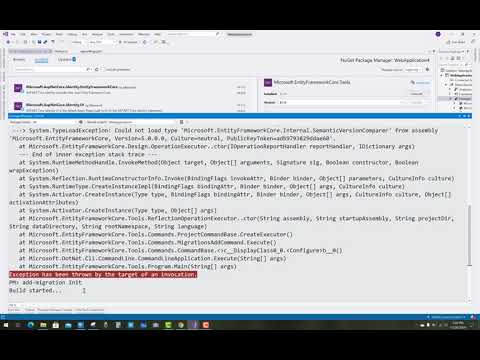
Found 39 images related to exception has been thrown by the target of an invocation theme








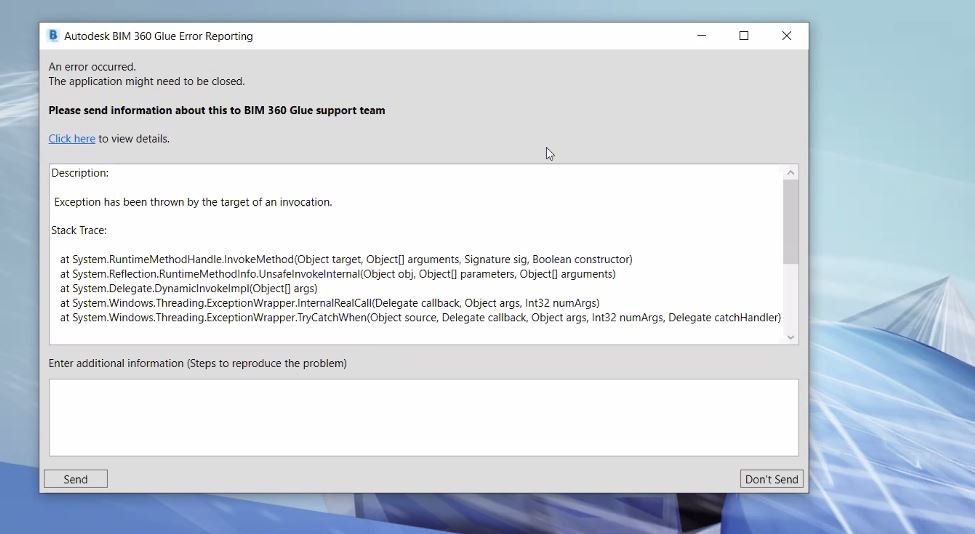








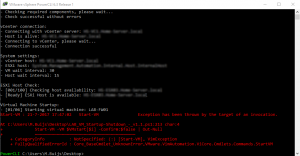

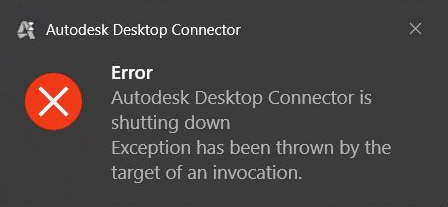



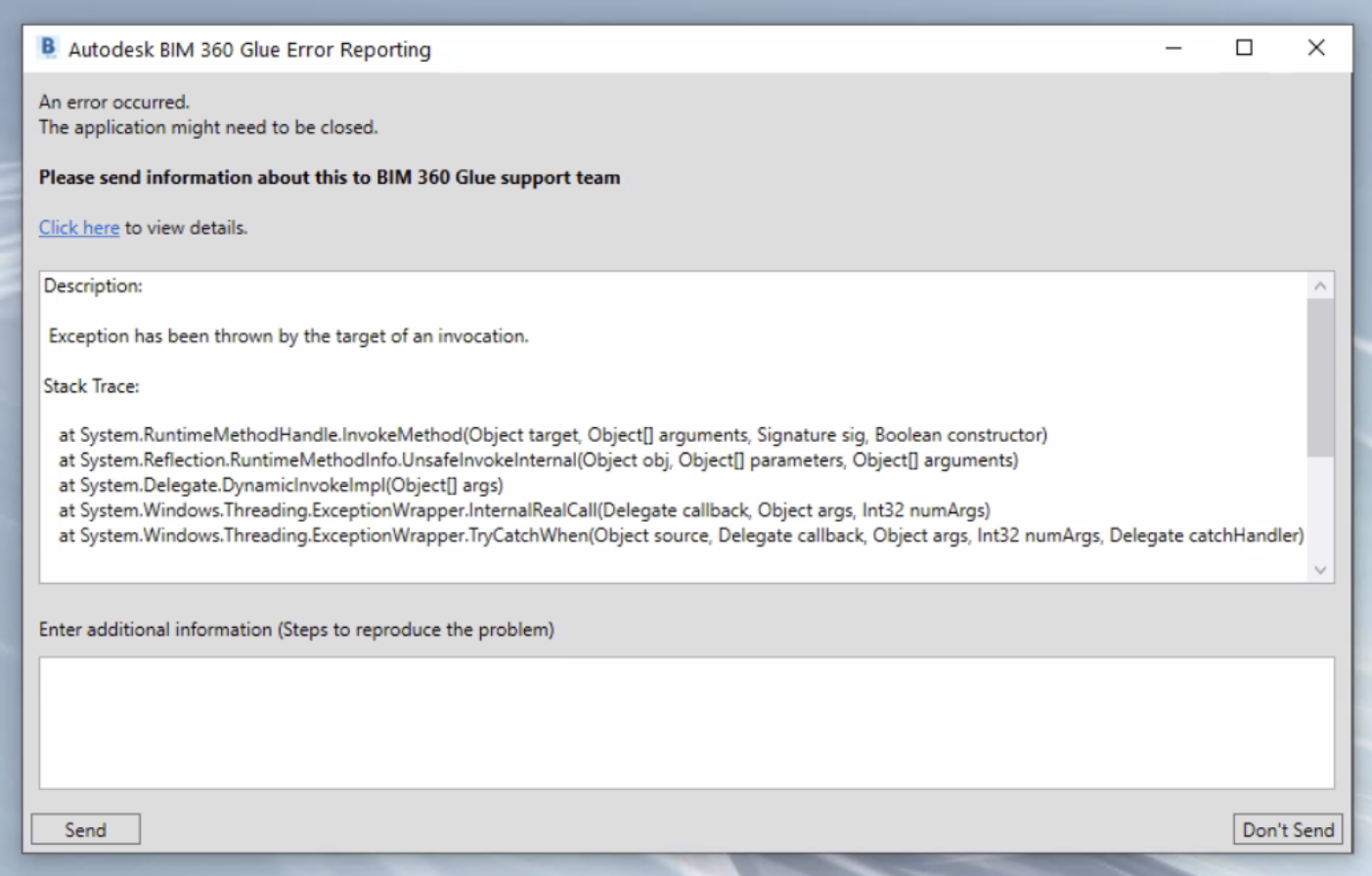







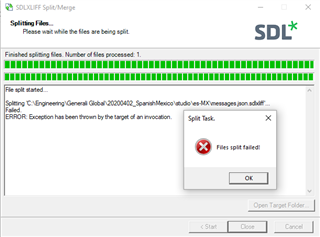



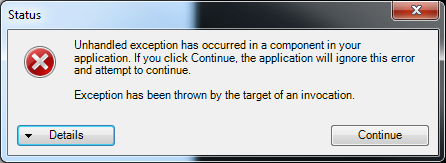

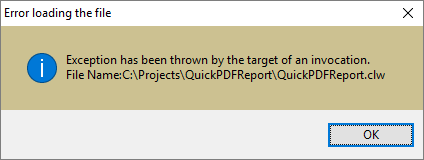



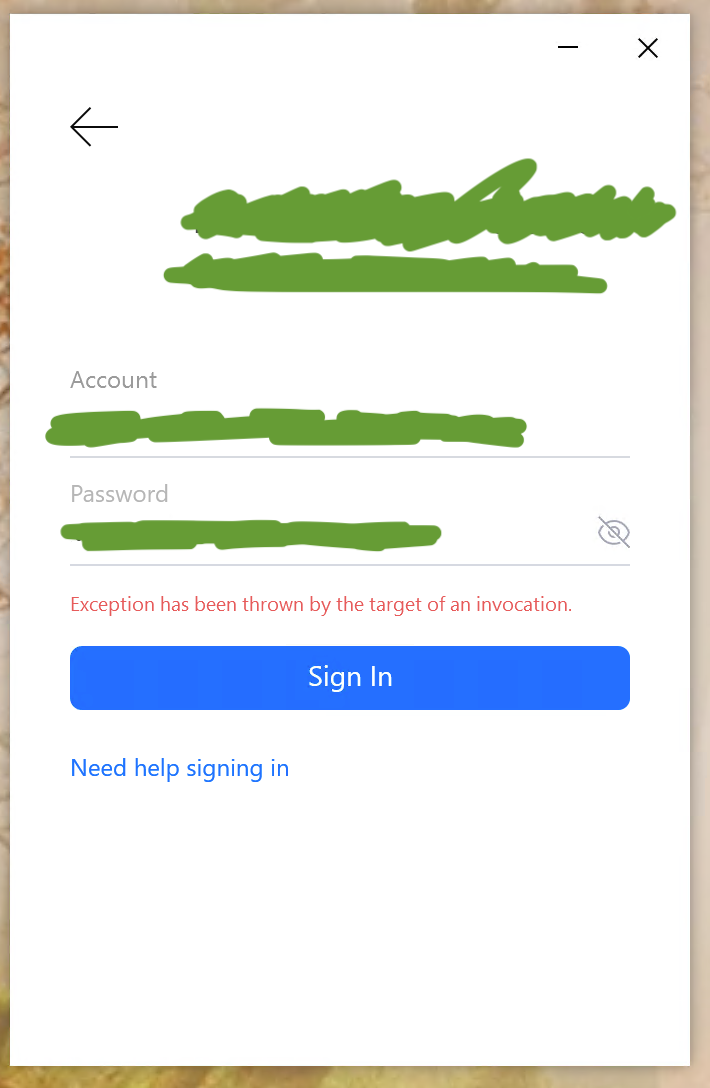


Article link: exception has been thrown by the target of an invocation.
Learn more about the topic exception has been thrown by the target of an invocation.
- “Exception has been thrown by the target of an invocation …
- Exception Has Been Thrown by the Target of an Invocation
- Exception has been thrown by the target of an invocation
- Exception Has Been Thrown by the Target of an Invocation
- Exception has been thrown by the target of an invocation
- Error handling and automatic retries in AWS Lambda
- Change Password – Exception has been thrown by the target of an …
- Exception Has Been Thrown by the Target of an Invocation
- “exception has been thrown by the target of an invocation.” error
- Exception has been thrown by target of invocation? in invoke …
- Exception has been thrown by the target of an invocation
See more: nhanvietluanvan.com/luat-hoc